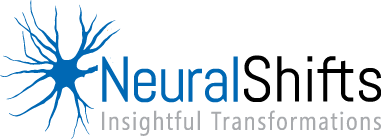The Truth about Engagement Surveys
We could talk about our obsession with measuring employees against yardsticks that have nothing to do with their jobs. Wherever we begin the conversation, the underlying problem typically is the same.
Most people will agree that engagement surveys have become a trend that lacks real importance for several reasons. First, it has to do with people mistrusting and disliking them, yet most workplaces have them. Conducting, analyzing, and acting on these types of surveys consume a lot of time and money. Second, self-reporting measures are prey to social desirability bias, people’s tendency to report what they think others want to hear and not what they really think. Third, is hard to draw a line between an engaged workforce and a satisfied customer. At the end of the day, what most CEOs care about is increased market share which they assume is achieved through having an engaged workforce.
Engagement surveys are based on the key assumption that people’s motivational levels do not fluctuate. Many times, is not clear whether the surveys are measuring extrinsic vs. intrinsic motivation. Research has shown that engagement is a multidimensional construct. Thus, if you focus on providing only extrinsic incentives you are limiting your workforce potential.
The question becomes what can be effectively measured to create real impact for your customers & employees?
The answer is psychological safety which is the belief your employees have about their ability to speak up without retribution. Amy Edmondson’s research at Harvard has demonstrated that your employees’ ability to speak up is highly correlated to the organization’s ability to foster a learning climate and drive innovation. Psychological safe environments lead to innovation and constant process improvement.
PWC global survey of CEOs shows 58% worry that the lack of trust in their business will impact their future growth. As we all know, trust is difficult to build and easy to erode.
My last visit to the pediatrician helped me understand the impact psychological safety has on business’ profitability and customer loyalty. Last fall I took my baby to get vaccinated. I showed the doctor’s orders to the medical assistant. She hastily looked at the order and applied a vaccine to my child, then said, come back in two weeks for the second shot. I said, wait a minute what did you apply? She flustered and after looking at the chart realized that was the wrong vaccine. The assistant came back and applied a new shot. Then, the nurse pointed out she had applied the wrong vaccine again. It was obvious her brain went into flight response after realizing the first mistake, which led her two her second mistake. My baby was very upset, so I decided to leave and return later to get the proper vaccination.
On my second visit, I was hyper-vigilant about ensuring the proper vaccine will be applied. I was taken aback when the nurse kept trying to apply the old vaccine for his new visit. I realized the incident was never documented.
I left the clinic feeling a mix of emotions, on one hand, upset about the lack of accountability, secondly sad for the people in the clinic who obviously are afraid to share their mistakes, and third deep mistrust in the business’s ability to provide the best care to my family.
What Can You Do
You will want to strive for a culture where people feel free to “speak up, disagree or take a risk at work.”
• Create Learning Labs: Spaces where the rules of engagement are based on learning and not just hitting the performance numbers. Conduct Post-Morten meetings to learn from projects’ successes and failures. Start measuring psychological safety and leadership practices to benchmark your team’s score and gain insight into how to drive learning in the workplace. [Neural Shifts can test your team’s psychological safety score]
• Delineate Road Maps: Create clear systems to help employees know what and where to navigate to achieve success. Sometimes, organizations get caught up with routines and fail to re-assess how the systems they have in place either support or become barriers for employees to achieve organizational goals. Conduct role clarity conversations on a consistent basis to eliminate barriers to success and organizational conflict.
To drive continuous organizational performance established new norms of engagement where trust and failure are part of your organizational growth strategy. Focus on delivering an exceptional employee experience to drive customer loyalty. So, the level of safety you have created within your team or organization won’t cost you your next client.
Photo by Patrick Tomasso on Unsplash


0 Comments